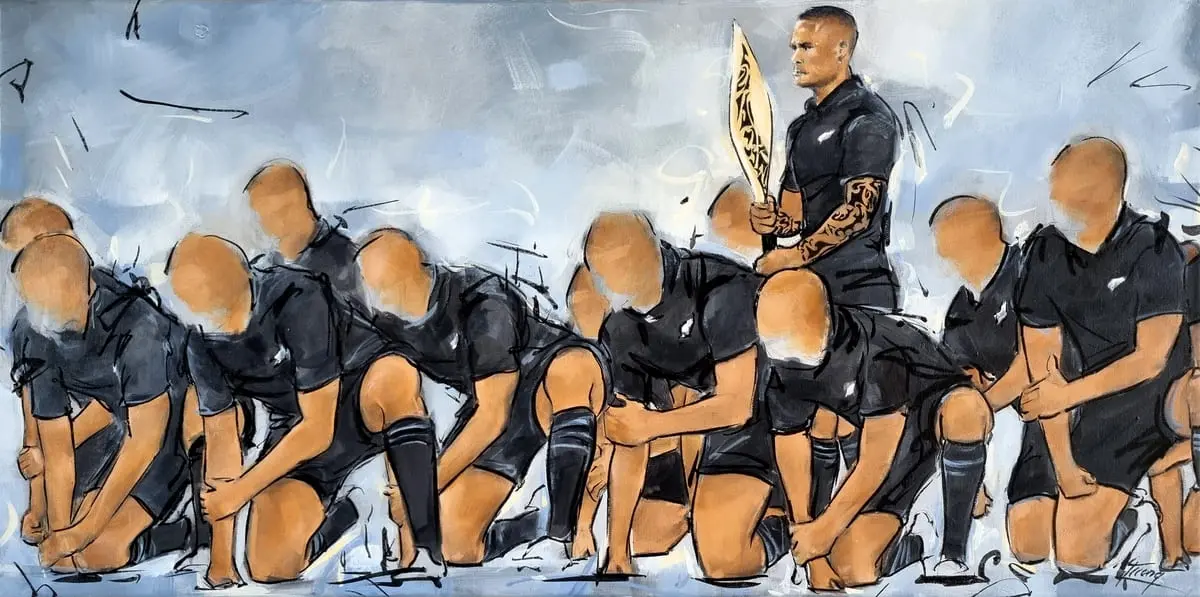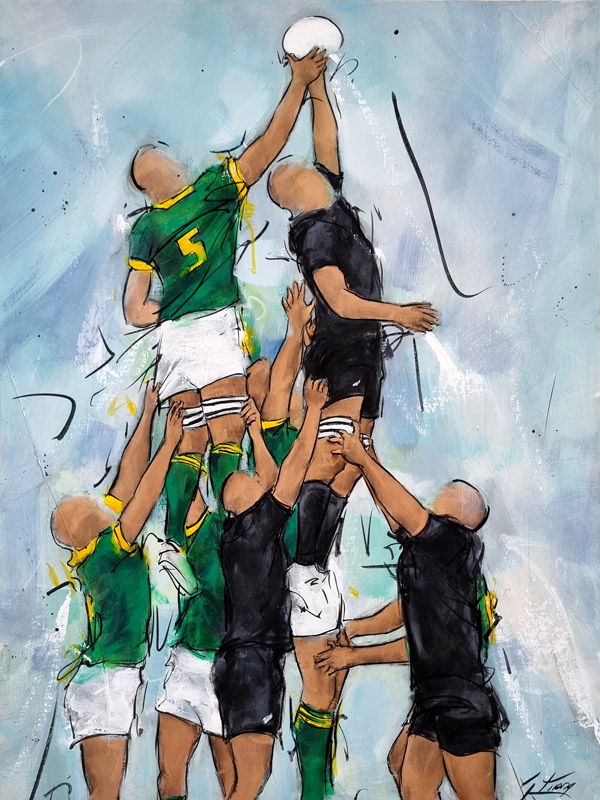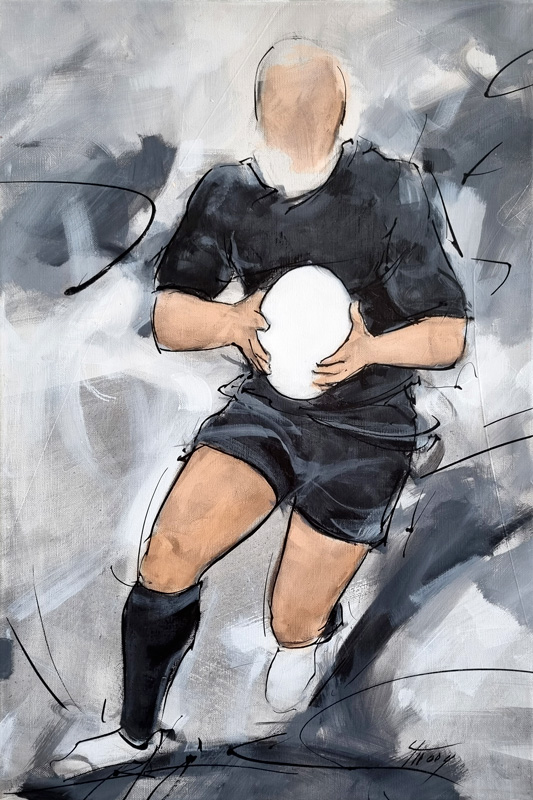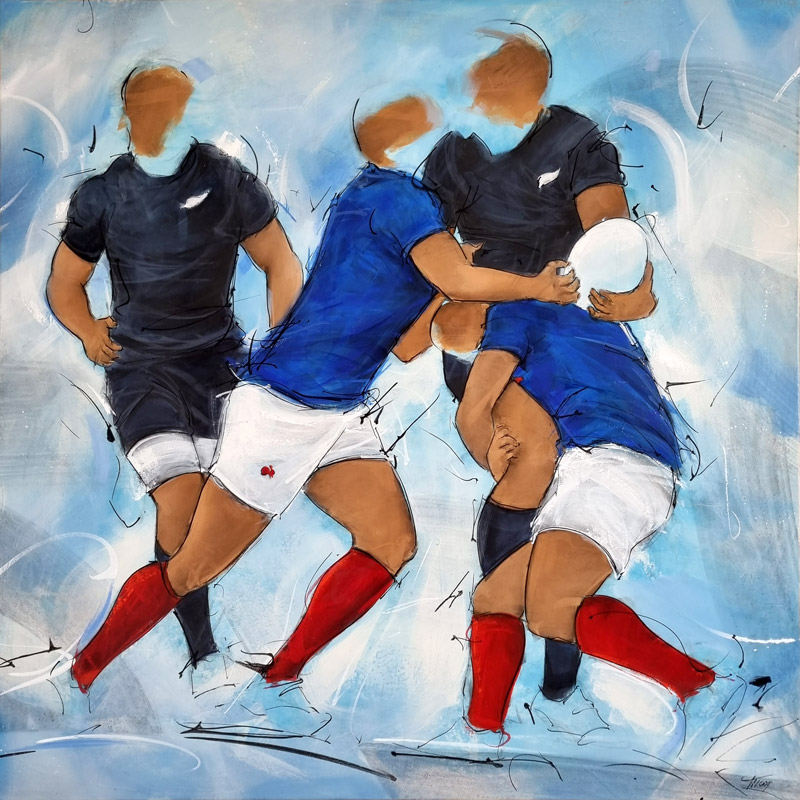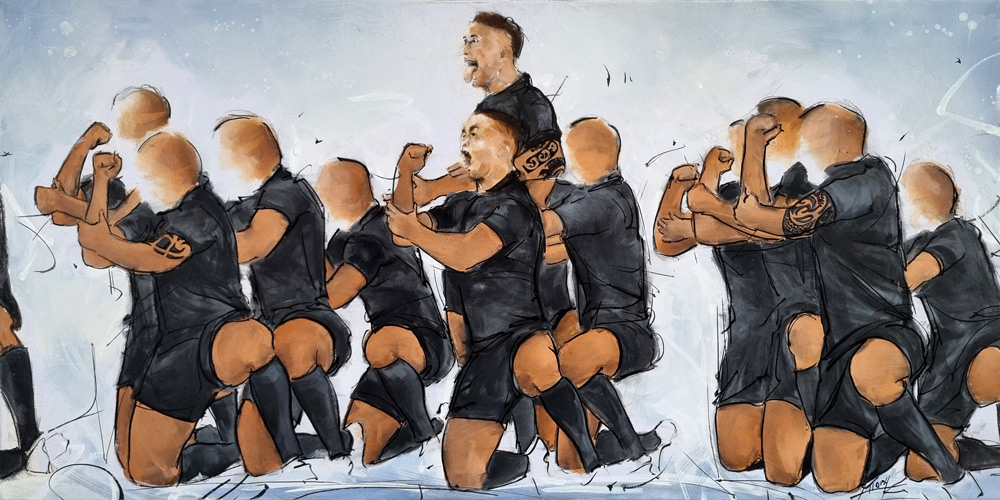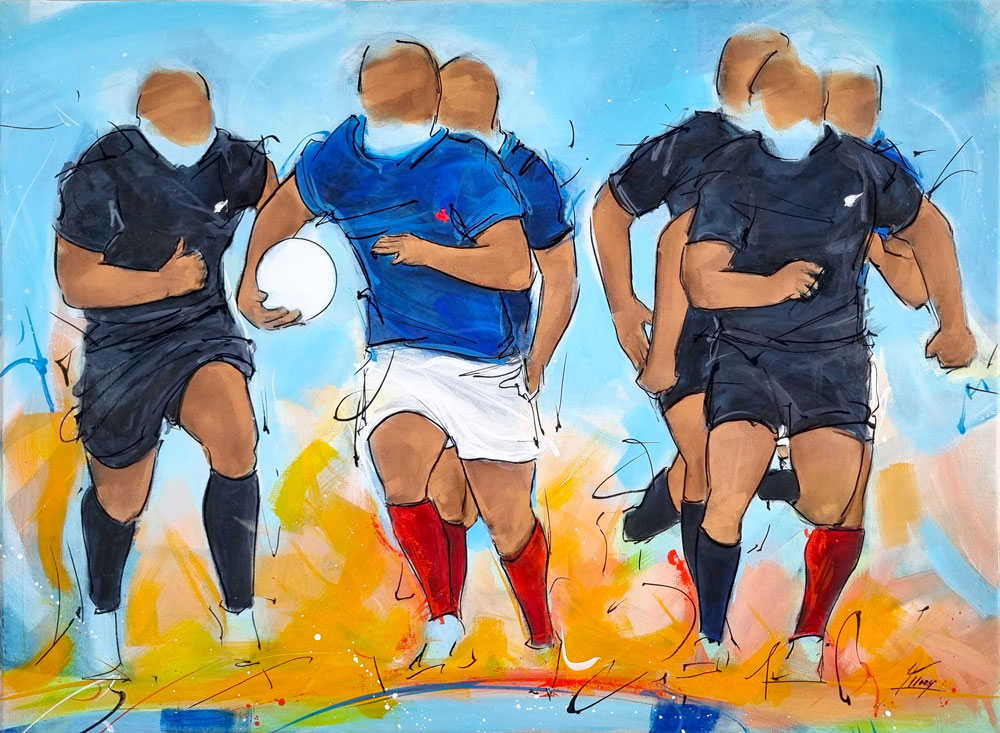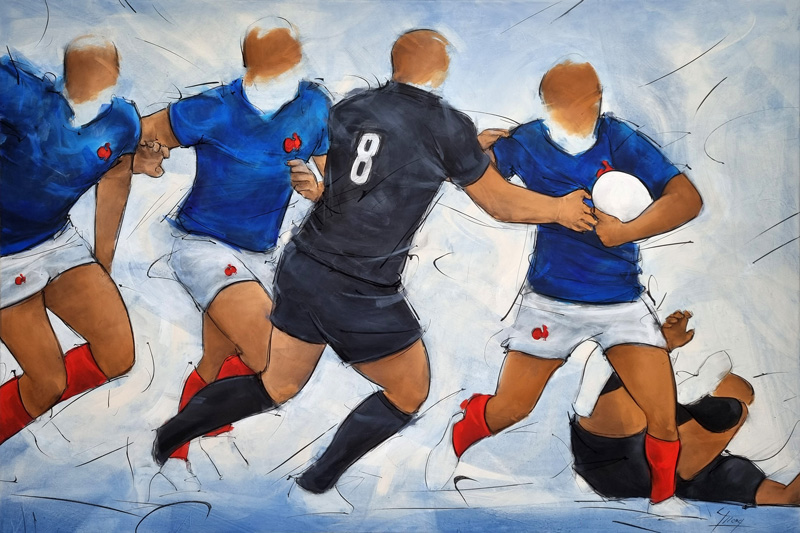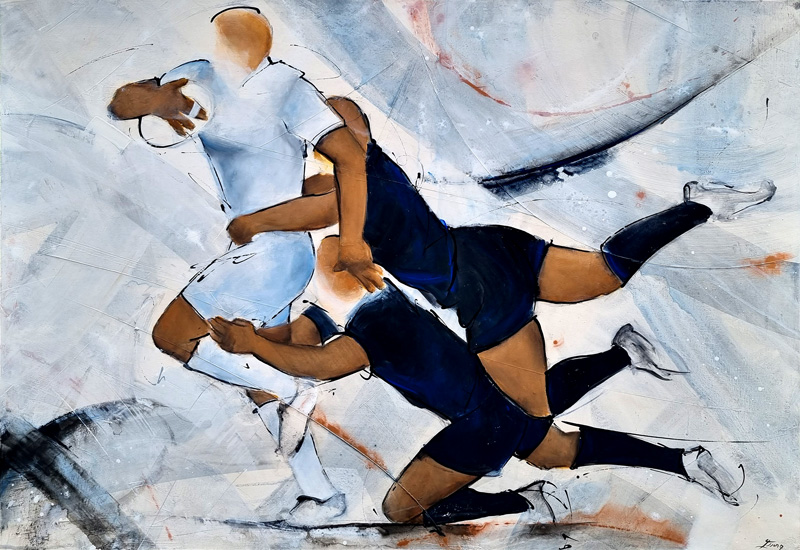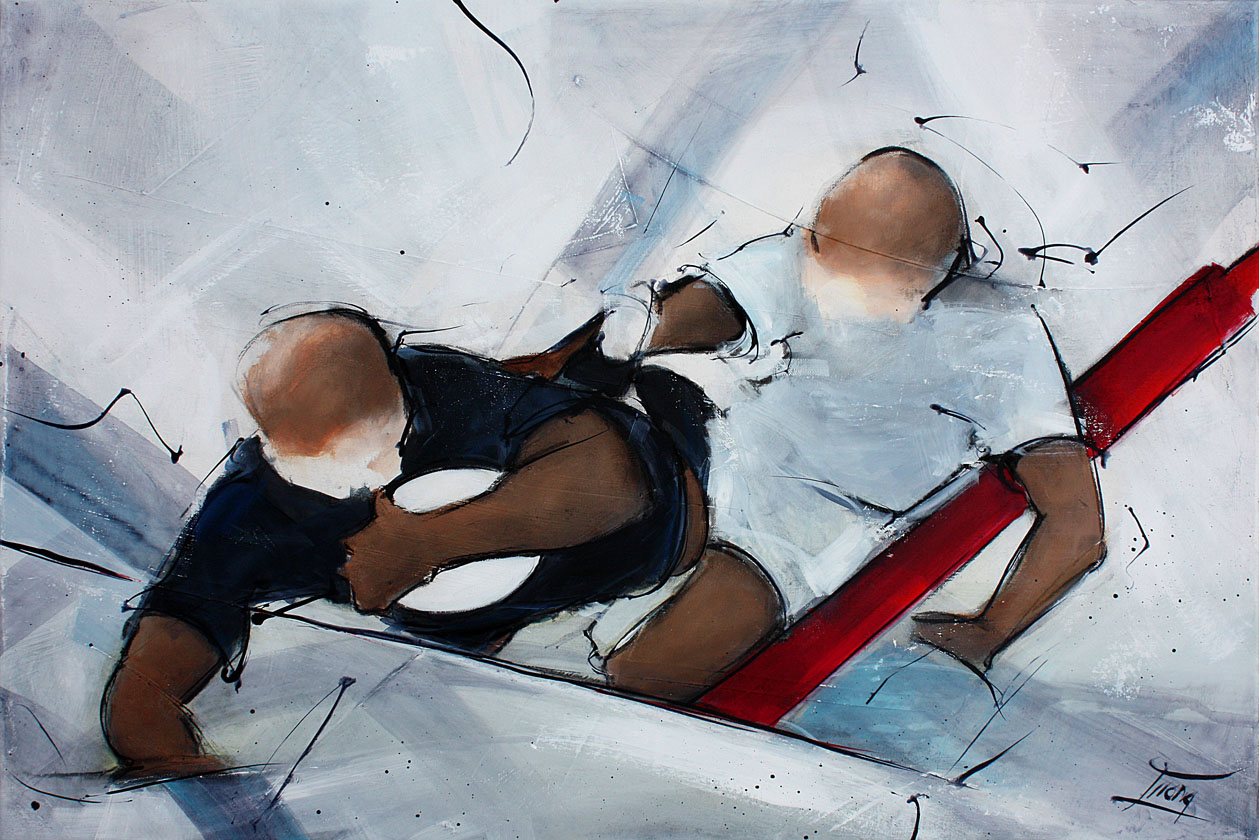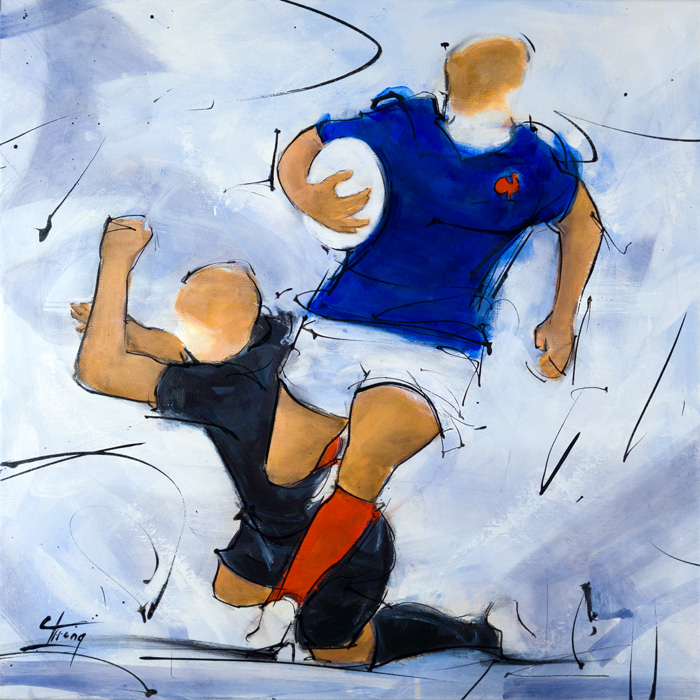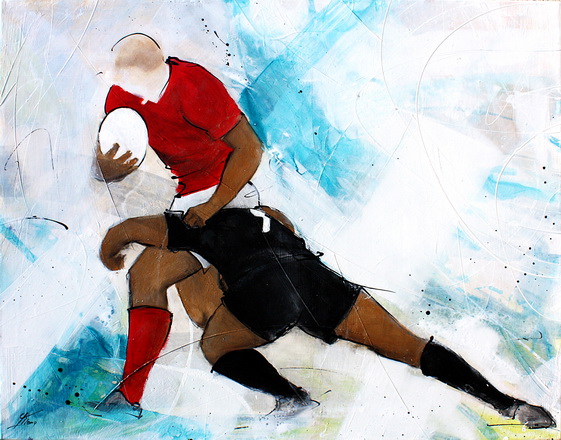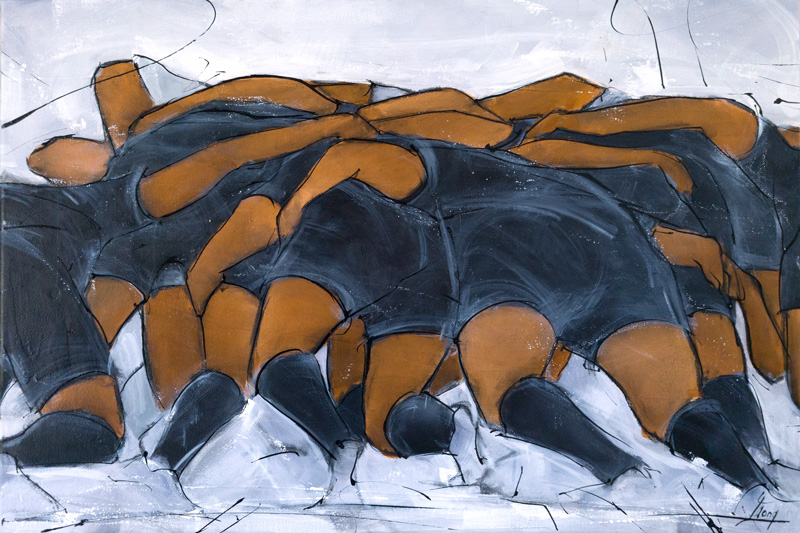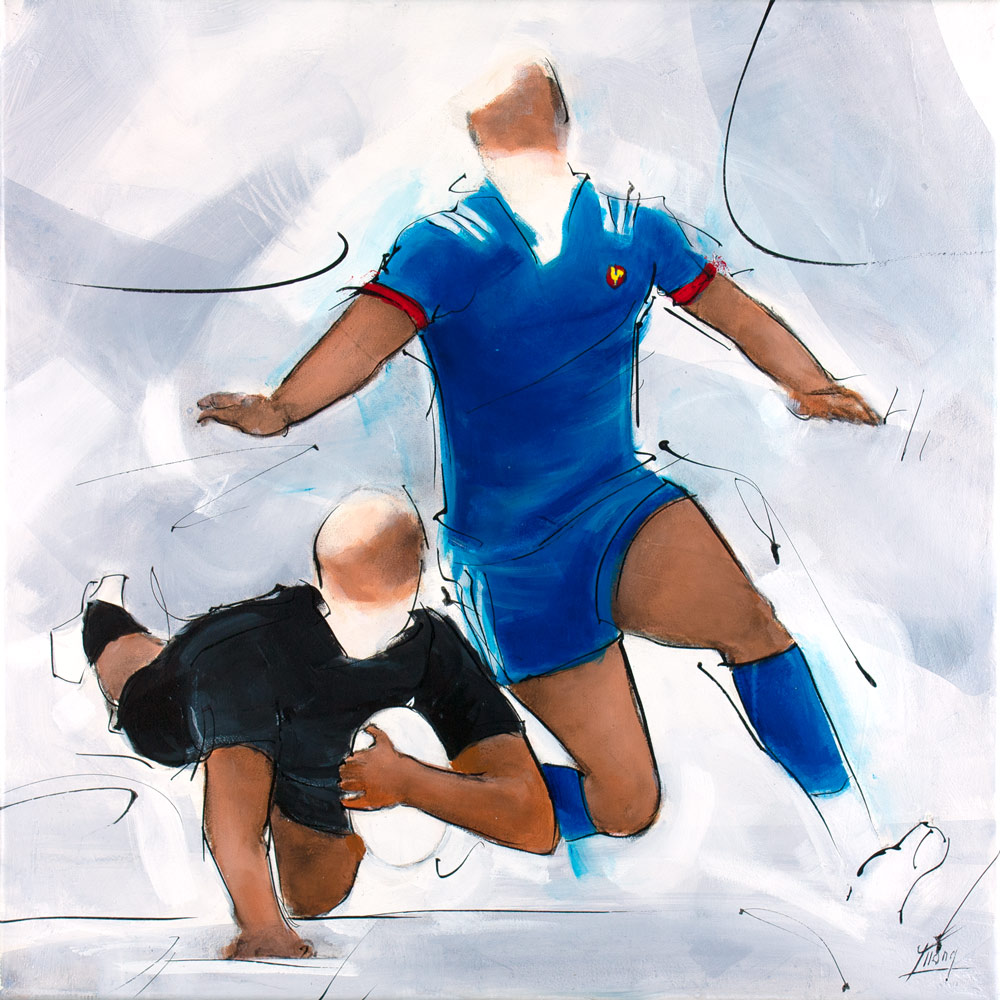All BLACK : the legendary black jersey story
The first time I put on that jersey, I didn’t want to take it off. I wanted to contribute to this legacy of over 100 years.
Richie McCaw
(All Blacks & World Record Holder for National Team Appearances)
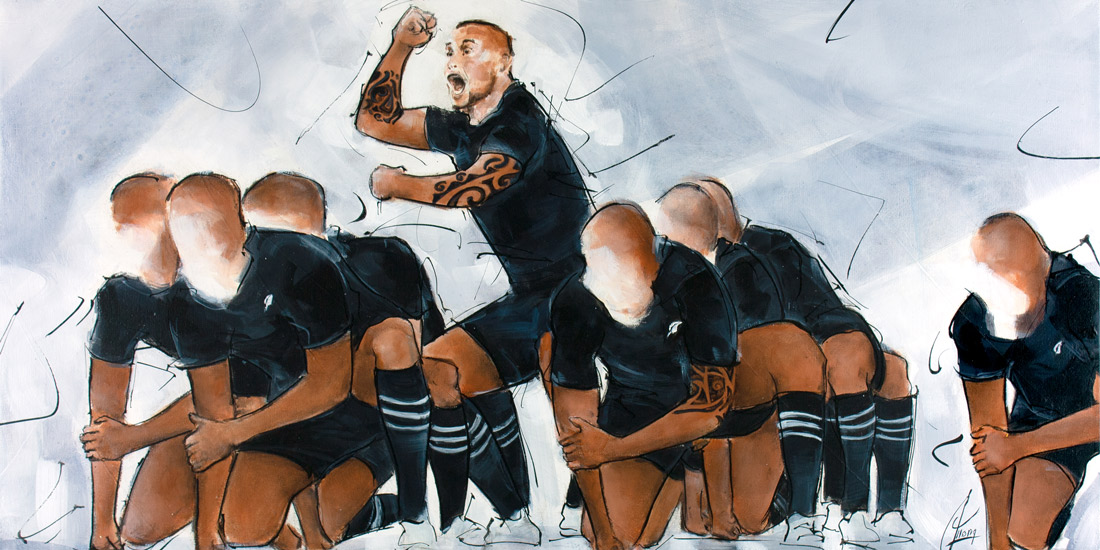
This quote from Richie McCaw sums up the philosophical and spiritual dimension around this black jersey. More than any other, this black jersey with silver fern embodies tradition built around excellence and consistency. In this country of about 5 million people, rugby is not just a sport, it is a religion driven by All Blacks’ success story.
All Blacks' dominance over other major rugby nations in terms of win percentage - May 2020
All Blacks
77 %
Springboks
62%
England
55%
France
54%
Wales
52%
Australia
51%
Argentina
51%
Ireland
45%
Scotland
43%
British lions
42%
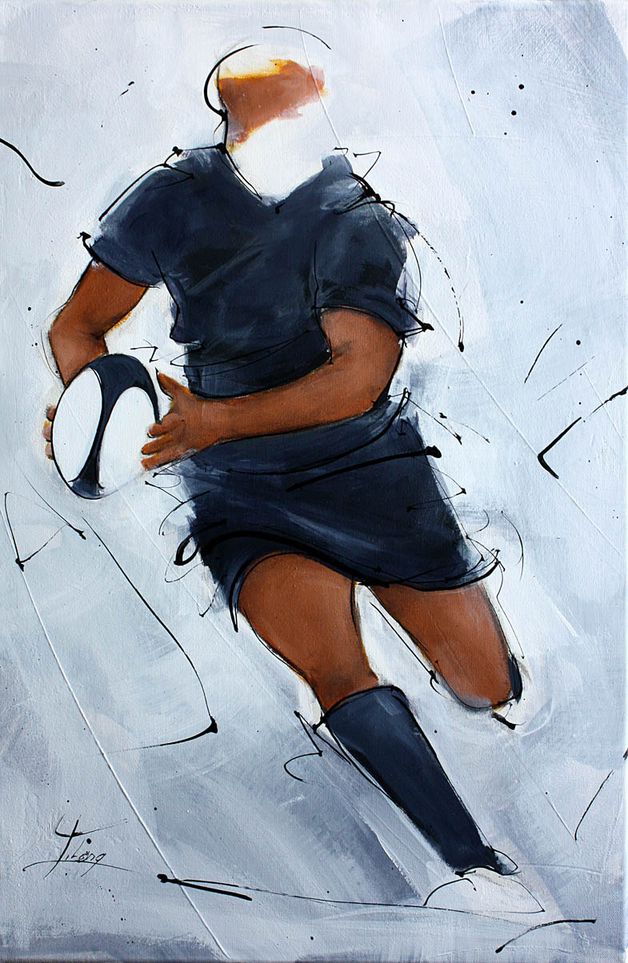
All Blacks
77 %
Springboks
62%
England
55%
France
54%
Wales
52%
Australia
51%
Argentina
51%
Ireland
45%
Scotland
43%
British lions
42%

Only 7 nations defeated the ALL BLACKS in test matches in history of rugby. And if black is not, in the artistic sense, a true color, it is rather a composition, a chromatic absorption as if wearers of this jersey were feeding on their adversaries soul. They have built, generation after generation, an imitated winning culture but to this day never equaled.
Few teams play against the blacks to win but often to try not to lose. Yet, as gifted as they are, they remain men with weaknesses and sometimes doubts. The V of victory done by the XV of France in 2011 rugby world cup finale against Haka is proof of this. Defeated twice in pool stage and lucky, France had not to be there and had nothing to lose. On that day, ALL BLACKS doubted but won Webb Ellis Cup after an amazing close-up and the tightest final score in rugby world cup history. an another example, Owen Farrell’s provocative smile in 2019 World Cup is one of the most beautiful images of certitude and confidence. The English team crushed the ALL BLACKS after a one-sided match before losing in the final against Boks.
Except perhaps in South Africa, a win against the ALL BLACKS is largely considered as a exploit against eternal favorite.ales
% of victories against ALL BLACKS - May 2020
Only 7 nations defeated the ALL BLACKS in test matches in history of rugby. And if black is not, in the artistic sense, a true color, it is rather a composition, a chromatic absorption as if wearers of this jersey were feeding on their adversaries soul. They have built, generation after generation, an imitated winning culture but to this day never equaled.
Few teams play against the blacks to win but often to try not to lose. Yet, as gifted as they are, they remain men with weaknesses and sometimes doubts. The V of victory done by the XV of France in 2011 rugby world cup finale against Haka is proof of this. Defeated twice in pool stage and lucky, France had not to be there and had nothing to lose. On that day, ALL BLACKS doubted but won Webb Ellis Cup after an amazing close-up and the tightest final score in rugby world cup history. an another example, Owen Farrell’s provocative smile in 2019 World Cup is one of the most beautiful images of certitude and confidence. The English team crushed the ALL BLACKS after a one-sided match before losing in the final against Boks.
Except perhaps in South Africa, a win against the ALL BLACKS is largely considered as a exploit against eternal favorite.
% of victories against ALL BLACKS - May 2020
To transmit the winning culture
The greatest victories are built physically through work and mental strenght. Being an ALL BLACK has sense, it means being part of a story, a beautiful story, made of ancestors and predecessors’ victorious epics around the world. These stories are related in a book that each new ALL BLACK receives during an honoring ceremony for his first official selection. White pages stand for new epics to write as glorious as the previous ones. The family and living heritage explain necessary commitment to honour their nation. They maintain cultural continuity, built since 1903 to write the new lines of this fabulous story in black.
New Zealand is one of the few countries where rugby is the national sport, and the All Blacks are a priority, a symbol of success in the eyes of the world. New Zealand is full of natural wealth highlighted by the splendid landscapes seen in Peter Jackson’s “The Lord of the Rings.” But would it be as well-known without the performances of the men in black? In this context, it’s easy to understand why the team and its values are greater than the individuals—talented and victorious but fleeting. As previously mentioned, they are just part of the story, and this story is written in both the feminine and masculine forms.
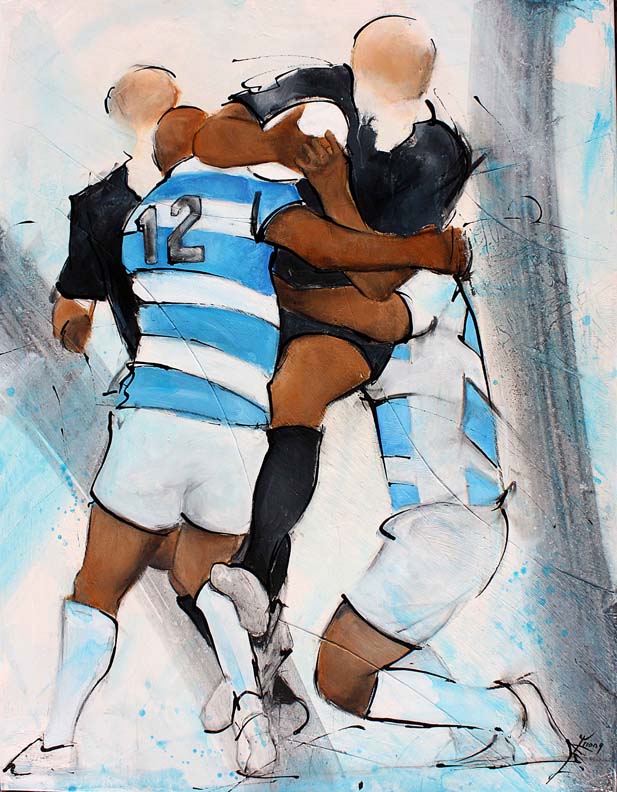
The link between generations of All Blacks
Since I’ve been interested in rugby, talented players have succeeded each other without weakening a well-oiled team and its performance. Like Samurai or Maoris, elders transmit to younger people as a perpetual chain of knowledge and experience. It a true cultural and sporting wealth to build performance consistency and to keep an invisible link between generation. When Michael Jones, Tana Umaga, Christian Cullen, Daniel Carter, Ali Williams and Richie McCaw retired, the ALL BLACKS would had to deal with performance issues. The men pass and the team continues to perform. Only Few nations are able to prepare and manage these sporting transitions as effectively as All Blacks.
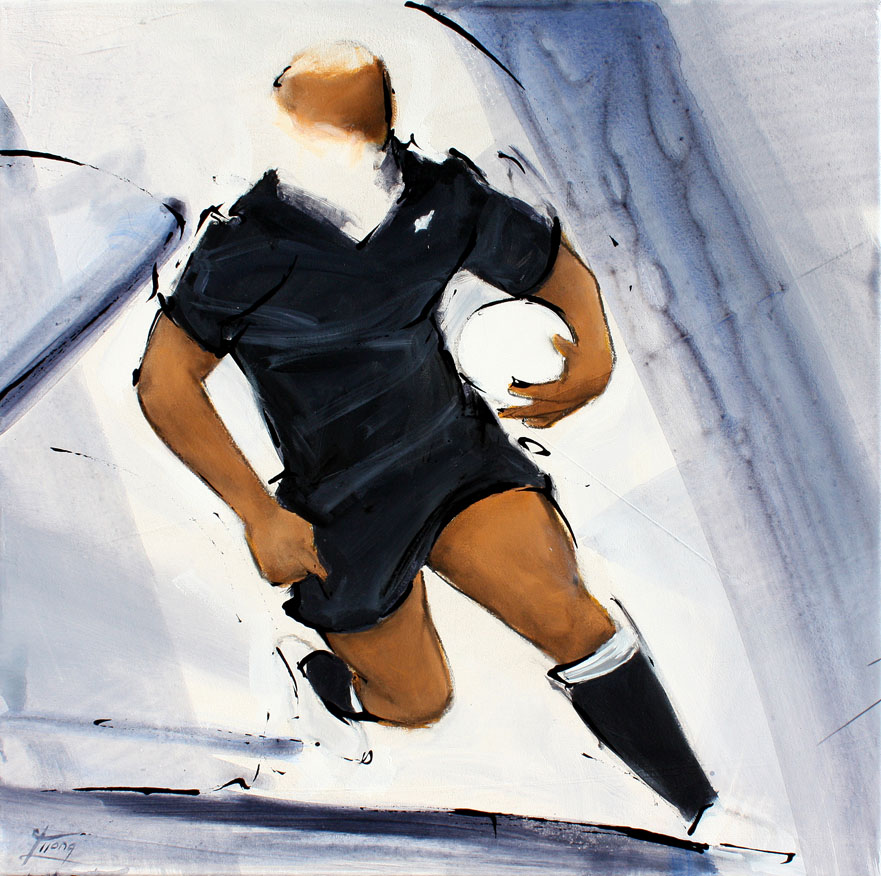
Michael Jones was a teammate of Josh Kronfeld for two years.
Tana Umaga, the iconic captain, mentored the young Ma’a Nonu (21 years old) in 2003.
Daniel Carter absorbed the methodical rigor of Andrew Merhtens (a modern clone of Grant Fox) and the unpredictability of Carlos Spencer to become the top scorer in history and a rugby legend. In turn, he passed on his legacy to the gem, Beauden Barrett.
The rugged Ali Williams and Brad Thorne taught Sam Whitelock the ins and outs and tricks of the trade.
Sam Cane grew up in the shadow of Richie McCaw and became the new captain of the All Blacks.
Intergenerational exchange, this ceaseless mix of youth, experience and continuity is a pillar of New Zealand’s success and a model for many nations.
If Kiwi performances are carried by countless individual skills, it is nevertheless by their collective strength that the ALL BLACKS impress the most. Strenght, confidence and control, they impose respect by their serenity in most situations. Every players, as gifted as they are, play for the team, their country and their ambitious goals.
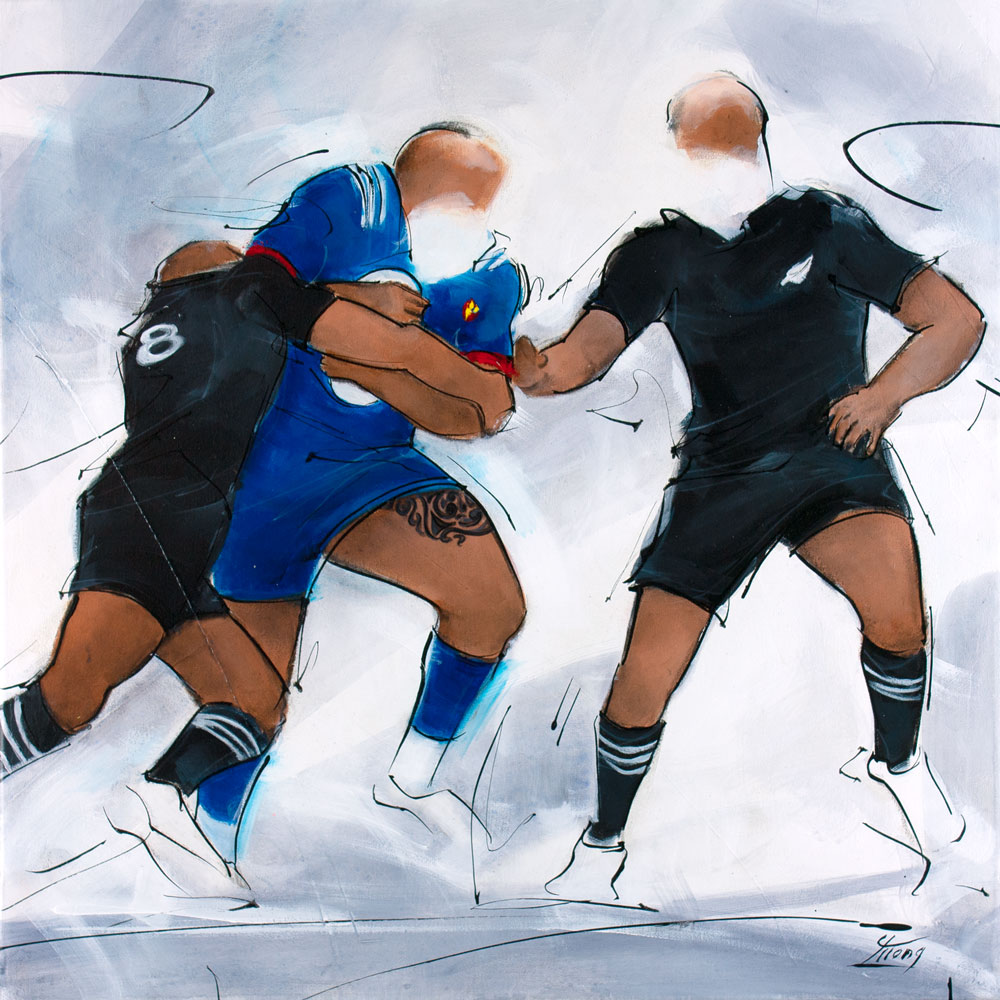
Obviously, the number of matches increased with new competitions over the last 30 years (World Cup, four nations, the evolution of the tournament from 5 to 6 nations). For me, the number of rugby centurions (players with more than 100 international matches) is indicative of teams that focus on continuity. 3 teams stand out. They all have given priority to national team results.
Number of rugby centurions – May 2020
Youth training as a top priority
Rugby is a contact sport, it’s undeniable. Enabling all children to play rugby is a huge challenge. To answer this question, Kiwi coaches have developed a unique training concept : weight categories. There are possibly large differences in morphological development between children of same age. This difference is also largely marked between kids of Maori origin, taller and heavier and those of Anglo-Saxon origin. As a result, strongest children with extraordinary physical abilities dominate a age category and relay others kids to extras roles. Rugby school educators struggle to solve the emotional issues associated with contact and tackles. It is one of the biggest difficulties in learning rugby and one of the main causes of quitting rugby.
I have seen, in French rugby schools, young kids under 10 weighing more than 55 kg or measuring more than 1m60. While they score many tries, the lack of opposition and adversity hinder their learning expereince and generate for other young players justified fears. In a country where rugby is king, this initiative, taken for many years, is a real success to encourage young people, regardless size, to play rugby in a safe and adapted environment. While this obviously does not solve all problems, weight categories are one answers to contact fears for any kid. He will find a corresponding opposition to his morphological development and his rugby skills.
While ALL BLACKS are wonderful ambassadors for rugby in New Zealand, it remains a small country. To renew players, it is essential to detect and prepare young kids to play rugby and perhaps to wear the black jersey.
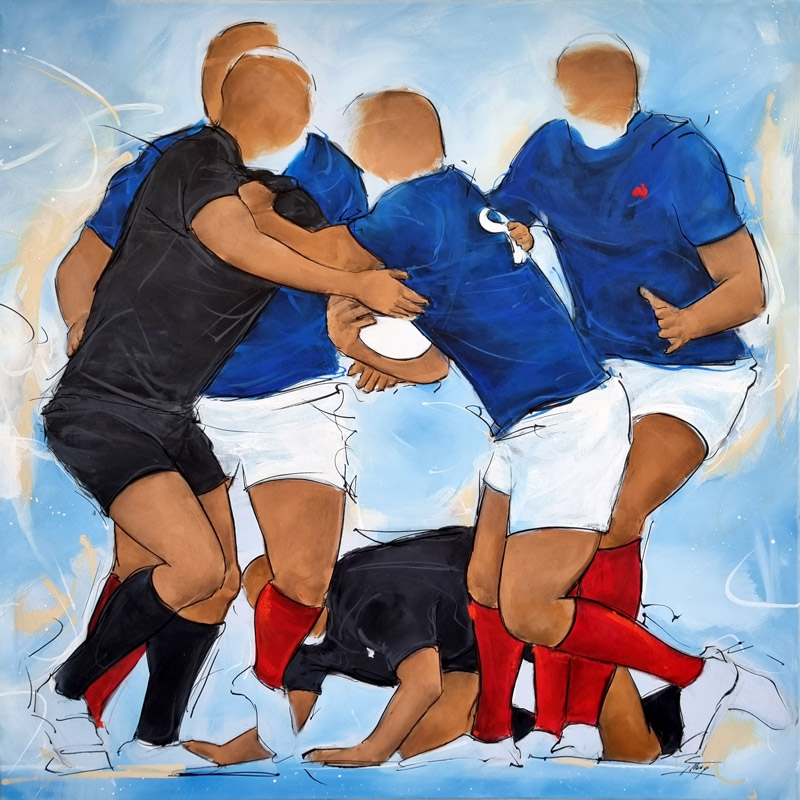
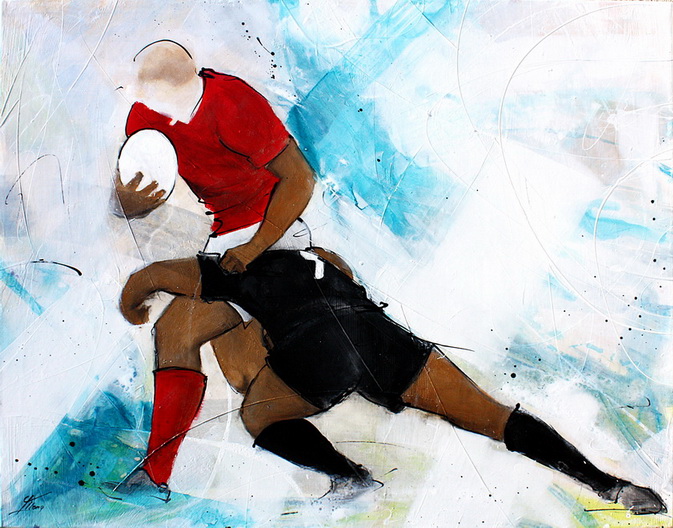
School as a playground
New Zealanders are to rugby what Brazilians are to football. The school allows to play rugby as a social link between children in the playground. I was very surprised during my trip in New Zealand to see children in uniform, oval ball under arm going to school. This difference is fundamental and provides a better understanding of rugby cultural impact on New Zealanders. There is no tackle of course, everything is based on playing with no contact and on avoidance to compensate age and size differences. Game awareness, position play, passing are all developed skills outside the sport in competition. This is a huge time saver for educators. They can focus on strategy and gameplay rather than on acquiring basic skills.
My first Haka in live from Stade de France
On November the 11th, 2000, I enjoyed my first France – New Zealand, a match smiling like powder. The last France – New Zealand will remain as one of the most amazing rugby matches in history. This new match is sold out as much as we can expect a fabulous show. Frustrated by the Twickenham debacle and their defeat against France in world cup semi-finals, All Blacks dream of crushing French team in Paris. Teams get into the field and line up for hymns. God save New Zealand resonates in the stadium sung by a few kiwis who have made the move. A large contrast with what is coming next. At the first notes of the Marseillaise, the stadium is in fire with french hymn echoing and taken up by nearly 80,000 spectators.

After the hymns …..
A amazing emotion. However, the best is yet to come, Taine Randell, today a substitute, position himself with his men and he is walking around, his teammates around him. The silence before storm, his first words rumble in the stadium, like a call to war. His message is clear, he commands his teammates to stand up and to take up arms, his face expresses neither compassion nor sympathy just an unquenchable thirst to fight and win. As a warlord, he defied his adversaries staring at french players. Suddenly, the hands slam on thighs and chests, carried by microphones, to the sound of Kamaté echoed in Stade de France. I feel like I’m close from this sumptuous war dance. Arms rise proudly to honor the sun and ask for divine protection in this hostile land. The Haka becomes more intense, the message comes from the heart, it expresses itself through gestures and attitudes. I don’t know what pulling the tongue really means but it sounds more like a provocation than a message of peace until the final jump.
aaaaaaaaaaaamazing!
My meeting with Jonah LOMU
I, 20 years ago now, enjoyed few days off for the match and to visit Paris. At that time, the All Blacks were one of the central themes of adidas communication. Just as I had just visited the Louvre, I took the Rue de Rivoli towards Chatelet. a few meters away was the Adidas shop, All Blacks’ official sponsor . Imagine my surprise when I approached and I could see a shaved skull far above the crowd. Jonah Lomu himself, the biggest rugby star in 2000 and Carlos Spencer signing autographs for their sponsor. I slip into the store to get closer of these two All Blacks legends. Their kindness and availability clearly surprised me, I had the chance to exchange few words with them and especially with Lomu. A real and beautiful encounter. Around me, some black jerseys but mostly French fans as surprised as me to meet these huge stars, a beautiful image of respect and brotherhood.
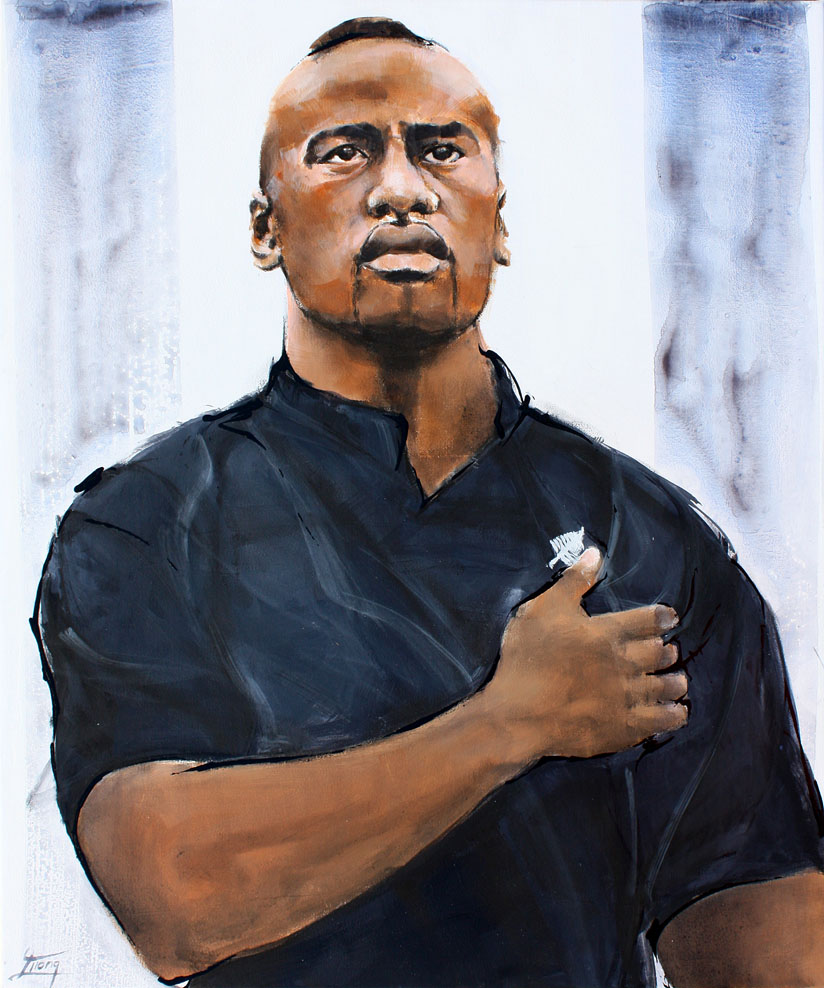
The first Kapa-O-Pango

Kapa o Pango translation
Let me become one with my land
It’s our land that rumbles
We are the All Blacks
This is my moment!
Our reign
Our supremacy will triumph
And we’ll reach the top!
The silver fern!
All Blacks!
The silver fern!
All Blacks!
The Kapa-O-Pango was done for the firsttime in 2005 in Dunedin during a match against springboks. This Haka is a masterful illustration of what the All Blacks truly are.
John SMIT, the iconic Springboks captain, will say after the game “To stand there and watch it for the first time was a privilege“.
Brian Liebenberg interview
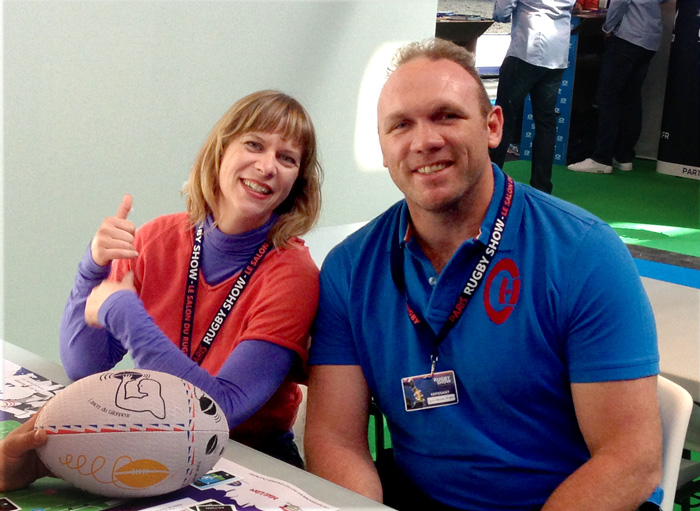
12 caps for the French national team (5 tries), including 2 matches against the All Blacks.
1 rugby world cup (2003)
Winner of 6 nations in 2004
3 French championship titles (2003, 2004, and 2007)
At the end of his career, he became a coach and developed a highly effective and enjoyable rugby training method. Discover more at [https://www.playball.fr/](https://www.playball.fr/).
Brian Liebenberg’s YouTube channel: Playball in video.
A big thank you to Brian Liebenberg for his contribution to this article.
What does it feel like as a player to face the Haka?
During my first match against the All Blacks, I fulfilled one of my childhood dreams. Although it was one of the most intimidating moments of my career, it was also a pure moment of joy. During the Haka, I felt like all the players were watching me, and I experienced every second intensely of that unforgettable moment.
Why are the All Blacks so special?
The All Blacks never rest on their laurels; they are always looking to innovate and improve. As a result, they are consistently ahead of other countries. Their rugby is based on simple, yet perfectly mastered and executed fundamentals. As a spectator, it’s a delight to watch them play, though it’s somewhat less enjoyable as an opponent. They also stand out for their great humility, another reason why they are so special.
Which New Zealand player impressed you the most during your career?
For me, Richie McCaw is the most impressive New Zealand player I’ve encountered. He is an extraordinary rugby player, exemplary in his commitment on the field and his behavior off it. I played against him twice, and he was incredibly strong. His immense career is proof of that, making him one of the best rugby players in history.
What differences do you see between French, South African, and New Zealand rugby?
South African rugby is generally more rugged and based on physicality. The players are often tall and heavy, which allows them to dominate other teams through their physical power.
The New Zealanders are much more technical. All players, regardless of their position, have a highly developed technical skill set in all game situations. As I’ve mentioned before, they provide a superb spectacle.
French rugby is more emotional, striking a balance between physicality and technique. The French national team is capable of remarkable feats on the field and can beat any team in the world, as they have demonstrated many times!
How have you transitioned into player training, and how do you assist rugby clubs and schools today?
Yes, I currently work with players and coaches. I have developed a training program called Catch and Think, which focuses on enhancing attentional abilities and individual technique through the use of playball, a ball that I designed. This method simplifies rugby and makes it more enjoyable, engaging our brains and improving reactivity, which is increasingly affected by digital influences.
With the same ball, I work in schools, rugby schools, professional teams, training centers, and with children or adults with disabilities, as well as in corporate environments. It’s a real pleasure to meet and share my passion with such a diverse range of people and to bring them joy through playing with a rugby ball.
Discover more at www.playball.fr/


